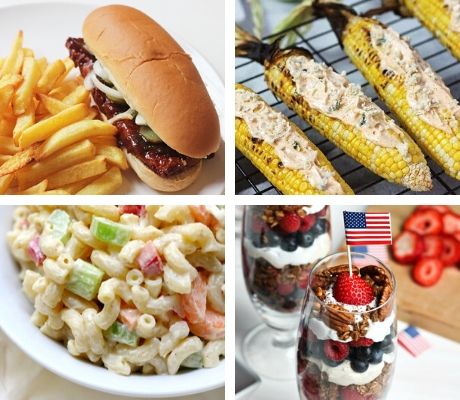How to Make Dill Pickles at Home
- Dill pickles are typically made with cucumbers, vinegar, salt, sugar, fresh dill, and spices.
- But spices like black peppercorns, mustard seed, and fresh garlic can add more flavor to your pickles.
- Quick-pickled cucumbers will last for up to two months, but preserved pickles last up to one year.
- Visit Insider’s Home & Kitchen Reference library for more stories.
Grocery stores offer a wide array of jarred dill pickles, but if you’re looking for an engaging DIY project — and if you like the idea of customizing your pickles to suit your tastes — you’ll be glad to know that these zingy cukes can be made at home if you have a bit of time and some expert advice.
We’ve got you covered on the latter with these pro pickle-making tips, courtesy of executive chef Ryan Schmidtberger of Hancock St. in New York City and Director of Fermentation and Product Development Cara Lovett of Cultures for Health
Does the type of cucumber matter?
The Kirby cucumber works well for pickling due to its size and thicker skin.
Kelsey Armstrong Creative/Shutterstock
When shopping for cucumbers to pickle, it’s important to take into account that the type of cucumber used affects the quality and texture of the pickles.
“Kirby cucumbers are the ideal size for pickling, and the skin isn’t too thick for the brine to penetrate,” says Schmidtberger. English cucumbers also work for pickling, but, because of their softer skin, they don’t tend to last as long, Schmidtberger says.
Thicker cucumber skins help the cucumbers stay structurally sound after they’re pickled, while thinner skins mean that the cucumbers can soften and even disintegrate in the pickle brine. For that reason, pickles made with softer-skinned cucumbers need to be eaten more quickly.
Most importantly, the cucumbers you use, regardless of their type, should be very cold before you pickle them. “Soaking cucumbers in an ice bath helps them stay firm leading up to the jarring process. Make sure to keep cucumbers cold until use and use them ASAP to keep them crunchy,” Lovett says.
What vinegar and spices do you use?
Pickling offers a lot of room for experimentation. To pickle cucumbers, you need vinegar, salt, spices, and sugar. Within those basic parameters, you can play around with many different kinds of vinegar and seasonings.
Apple cider vinegar, white wine vinegar, and rice vinegar all work for pickling, but for classic dill pickles, Schmidtberger recommends white vinegar, which brings a pure, bright acidity.
The ideal salt for pickling is pickling salt, sometimes called “preserving salt,” which is made of pure sodium chloride. If your grocery store doesn’t carry pickling salt, you can swap in kosher salt. Try to avoid table salt, as it can include additives like iodine and anti-caking agents that weaken its effectiveness and compromise the quality of the pickles, Lovett says.
For dill pickles, you’ll also need fresh dill. Aside from that, you can use just about any herbs and seasonings that suit your tastes. Try black peppercorns, mustard seed, garlic, coriander, chili flakes to add some spice, or even dill seeds. To save time, you can also pick up a pre-mixed blend of pickling spices, which will include many of the aforementioned ingredients.
If you’re new to pickling, it may be surprising to see sugar on the list of necessary ingredients. But cane sugar (or regular granulated sugar) plays a crucial role in the pickling process by balancing out the acidity and the salt content.
How to make dill pickles
Make the brine first, then fill the jar with herbs, spices, and cucumber.
Tatevosian Yana/Shutterstock
Instructions
1. Prep the cucumbers. Schmidtberger starts his pickle-making process by washing the Kirby cucumbers and cutting them all in half lengthwise. Kirbys are small cucumbers (about 3 to 6 inches long), so a halved Kirby makes a perfect pickle spear.
2. Make the brine. Bring vinegar, water, salt, sugar, and spices to a boil in a small saucepan over medium-high heat for 2 minutes until fully dissolved, says Schmidtberger. It’s important to turn off the heat once the salt and sugar dissolve, as you don’t want the liquid to reduce. Reducing the liquid too much will change the flavor of the brine and can make it harder for the brine to soak into the cucumbers.
3. Fill the jar. Break the bunch of dill into sprigs, then pack the jar with the split cucumbers and sprigs of dill.
4. Add the pickling liquid. Pour the hot pickling liquid over the top until the pickles and dill are fully submerged. Cover with the Mason jar lid and allow to come to room temperature.
5. Store the jar. Tuck the room-temperature jar into the refrigerator for at least 24 hours before eating. These pickles should be stored in the refrigerator, and will last up to two months.
Insider’s takeaway
The crunch and tanginess of dill pickles make them a super-popular snack, and they’re not as hard to make at home as you might think. By slicing Kirby cucumbers in half, making a brine with white vinegar, kosher salt, granulated sugar, and spices, packing the cucumbers and fresh dill into Mason jars with the brine, and then moving them to the fridge, you’ll have a supply of dill pickles ready for your next craving.


